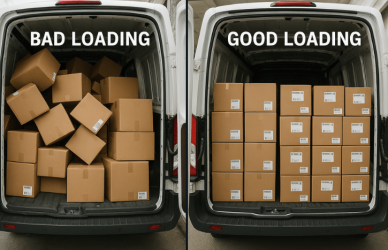By tackling traffic light stops, fleets could achieve dramatic savings in time, money and environmental impact – to the tune of 3,800 minutes daily travel time shaved off with a corresponding $1.5K saved on fuel costs annually along with 1.3 tons less emissions per year – all while boosting efficiency by 4 miles/gallon.
Freight North Texas, a North Central Texas Council of Governments (NCTCOG) is rolling out a unique program in the Dallas-Fort Worth region. The plan is to adapt intelligent traffic signal optimization that has worked well for transit authorities but with freight vehicles in mind. The goal of the program is to improve safety, mobility, and efficiency in the area while also improving air quality in the region.
Texas Connected Freight Corridors has received federal funding to help bring traveler information and connected vehicle technology to freight vehicles driving on I-35, I-45, and I-10 in an area known as The Triangle. In a recent survey of users by the project team it was revealed that last mile deliveries were still presenting issues for truckers due to heavy traffic around warehouse districts. This finding drove the development of the new Freight Priority project which aims at helping reduce these obstacles faced during delivery routes from highways onto local roadways.
Texas stands as the most congested state for trucks, with 13 of its locations ranking in America’s top 100 bottlenecks list. To address this issue and maximize freight flow across metro DFW, a five-year Freight Priority initiative has been launched by NCTCOG under consultants Kimley Horn at the helm. The program aims to optimize up to 500 traffic signals throughout metro DFW – an ambitious effort towards resolving truck congestion for the Lone Star State.
“In north Texas, since it’s the center of the U.S. for so many truck and freight routes, this is an ideal location to have a program begin like this,” said Leigh Hornsby, managing principal at Public Information Associates.
Kent Kacir, project manager at Kimley-Horn noted that he anticipates that the cities of Garland and McKinney will be the first to participate in the program which is expected to deploy within a couple of months. He said that, to his knowledge, this is the first program of its kind in the U.S. and he thinks other cities will adopt this usage as well.
Freight Priority is a cutting-edge tracking system using a free app available to all tucks traveling through the area. The program connects trucks to cloud databases, which allows GPS location data of vehicles to be shared via an app or telematics systems that connect directly into Smart Priority software and the EcoDrive app. Trucks can stay connected without any extra hardware on either side. It offers accurate high resolution (1s-5s)AVL services from multiple third parties, and can be used by operators without AVL by using the mobile or dash app appliance which is currently being developed.
“Once we know that a truck is within a particular area of an intersection that we have granted rights to control, then our signal goes down from the cloud to the local agency’s traffic signal to extend that phase an additional four or five seconds,” Kacir said.
He went on to say that the app will provide drivers with an optimized speed advisory, which is the recommended speed they should drive to be able to traverse a group of traffic lights on green. In addition, it will let drivers know when the end of a green phase is about to occur so they can slow down in time.
The signal priority system can extend a green light and truncate a red light so a truck can get through without making a stop, which costs time, fuel and emissions.
If you’re curious about just how much time, fuel, or emissions are saved by the system, you’ll be happy to learn that it also tracks these metrics along with a safety assessment with a before and after study on crash data that will be anonymized, but available to the public.
“We have in development as we speak a dashboard that will be available to anybody; it’s public facing; they’ll be able to go to the website and see exactly on a day-to-day basis what metrics are being saved in what community,” Kacir said. “Then, if you’re a local agency operator – let’s say the city of Garland – you will be able to go to it and, with special privileges, look into deeper details of your traffic management system and be able to pull out of that specific details on which signal actually gave the most benefit to the trucks.”
Truckers are expected to benefit from a new signal priority system, with an estimated savings of 16k hours in travel time and $400k saved on fuel and operational costs. In addition, by reducing 325 metric tons of emissions it’s hoped that the environment will reap rewards too.
Local governments are encouraged to register as a user on FreightPriority.com. Hornsby said the program is looking for additional participants on the freight side, especially owner operators who travel through the area.
“One of the things we were hoping from our outreach here is to connect and have a wider swath of people that we might be able to let them know about the program,” she said. “There are so many independent operators out there, too, who are welcome to participate in this as well. We’re really focusing on opportunities for identifying and reaching out to potential participants.”
Source: CCJDigital








